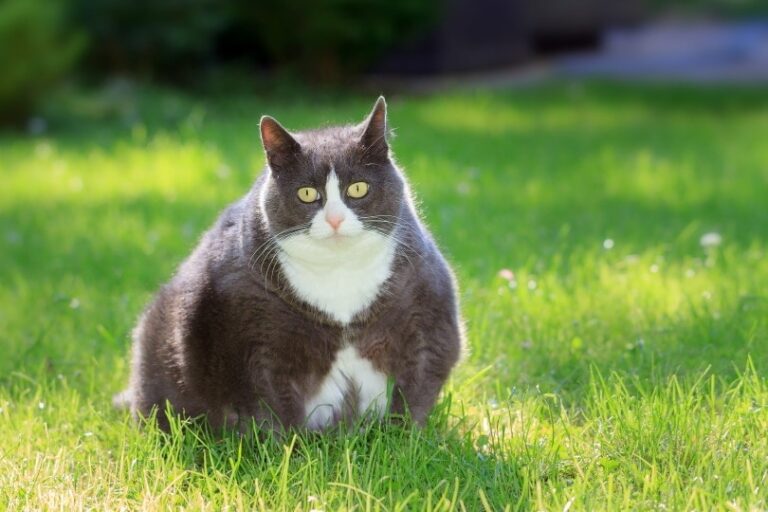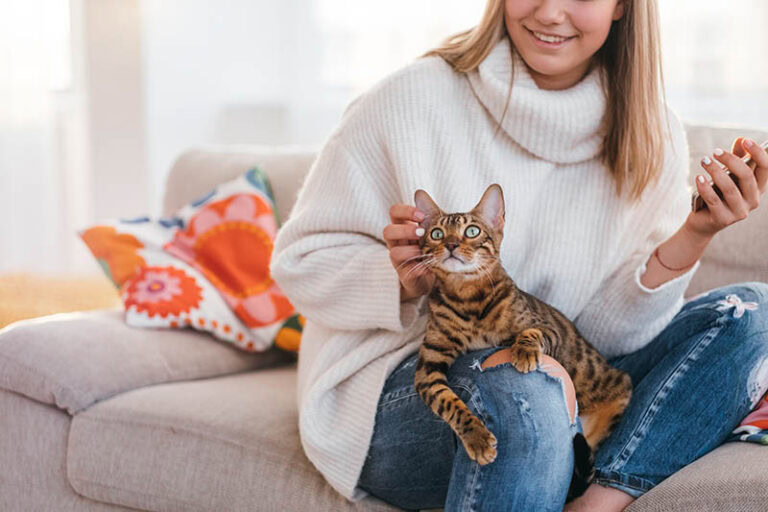VET APPROVED

The information is current and up-to-date in accordance with the latest veterinarian research.
Learn more »Whether you’ve just brought a brand-new gerbil home or you’re thinking about it, you want to know what you’re getting yourself into. Rest assured, gerbils are easy to care for and can be quite fun to have around. As lovers of tubes and little exercise wheels, you can get your gerbil moving around his enclosure or your house (with supervision), as well as in your hand or on your shoulder if you train him well.
So, let’s start talking about the ins and outs of owning and taking care of gerbils.

How Do I Take Care of My Gerbil?
Feeding
Feed your gerbil a measured portion of a complete pellet-based gerbil diet. Depending on their age, size, and activity level, gerbils will eat around 5–10 grams of pellets per day. Supplement this with a small piece (about a teaspoon) of fresh fruit or vegetable like carrot, apple, zucchini, or bell peppers once or twice per week, avoiding high-water or high-sugar items. This helps ensure a balanced, species-appropriate diet without risking digestive upset.
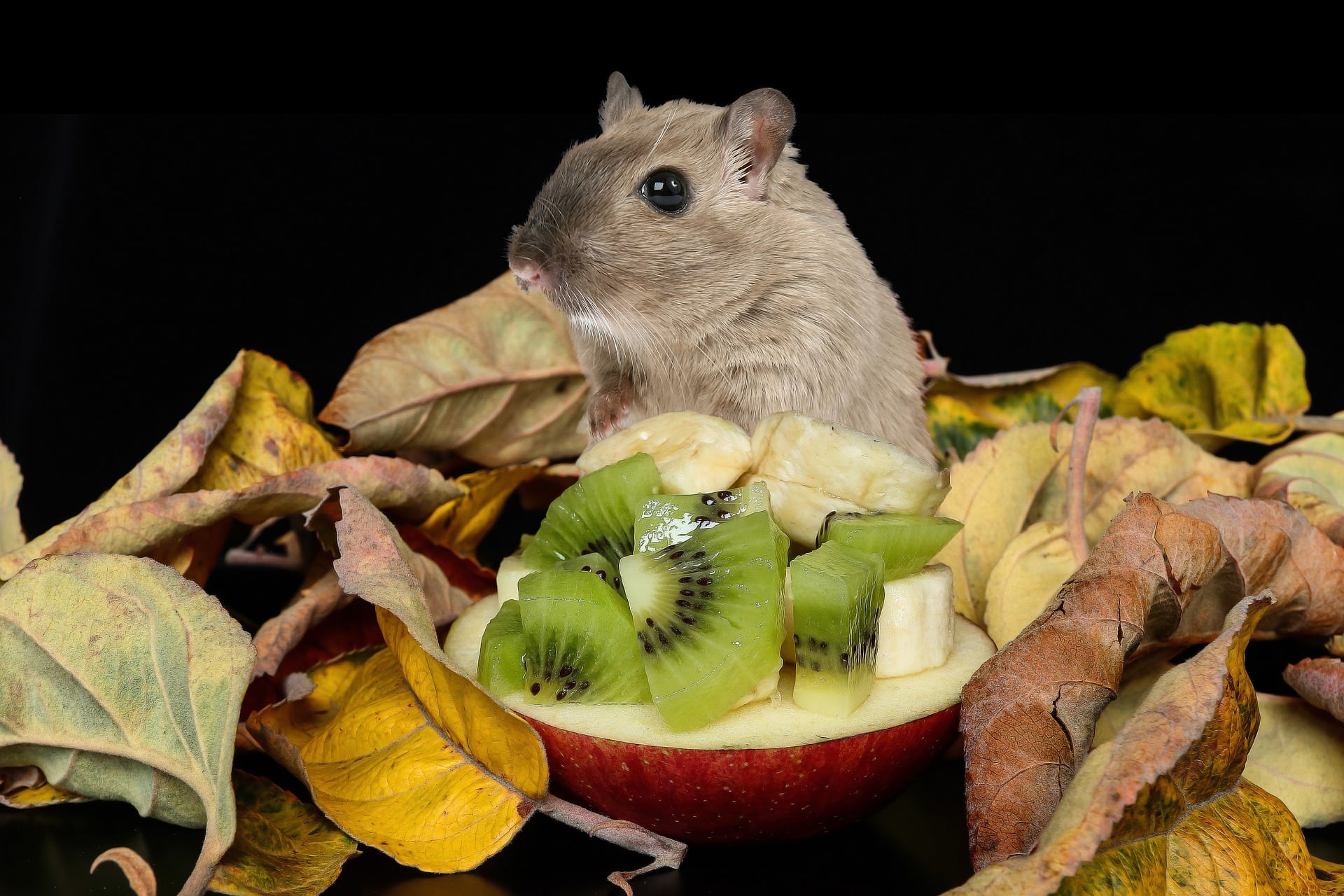
Handling
Your gerbil might be quite timid at first. When you introduce them to their new home, leave them be for 3 to 4 days as they need time to adjust to their surroundings. Of course, you will continue to offer them food in a bowl and water in a bottle feeder. After this time, try offering them some food from your hand. Once they get comfortable here, you can try to pick them up. You can do this by scooping them up into your hand. You should never pick a gerbil up by its tail or grab onto the tail in any way, as it could cause injury.
Cage Cleaning
Gerbils stay cleaner than other rodents, but they still need some help cleaning their cage. Remove any soiled bedding as soon as you notice it. The bedding should be completely changed at least once a month, but more like twice a month for two or more gerbils. Check the hide houses regularly and clean them out, too.
Every 3 to 4 weeks, disinfect the gerbil cage or aquarium with the use of a pet-safe disinfectant or a diluted bleach solution of 1 part of bleach to 32 parts of water. Rinse thoroughly with clean water and allow to dry. Wash the food dish and water bottle daily.
Cage Location
The cage should be kept indoors in a room that stays between 65℉ and 75℉. Do not put the cage in direct sunlight, and keep the cage away from other animals that might disturb the gerbil. If the gerbils’ nocturnal behavior bothers you, keep their cage out of your bedroom.
Exercise
Once you’ve got your gerbil hand-trained, you can take them out of their cage for exercise. 20 minutes a day is a good place to start. Keep an eye on them during this time, and make sure the enclosure is escape-proof and free of hazards. It’s also a good idea to make sure other pets are caged up or outside.
Socialization
It is crucial to consider the species’ natural behavior and habits.
Mongolian Gerbils (Meriones unguiculatus) do very well with the company of other gerbils. A same-sex pair living together is an ideal situation.
Fat-tailed gerbils (Pachyuromys duprasi) are typically solitary and may become aggressive if housed with others.
Grooming
Gerbils are great at cleaning themselves, but to help them naturally do that, give your gerbil access to some sand. These natural desert creatures will use the sand to remove excess oils and debris sticking to their coat. To do this, get a dish more than ½ inch deep, fill it with chinchilla sand (never dust) ½-inch full. Put the sand bath in the tank for 10 minutes at least 2–3 times per week, and your gerbil should take care of the rest.
If you have noticed that your gerbil’s nails have curled too much or started to grow back towards their feet, they need to be trimmed. If you’re not confident doing this yourself, your vet or vet nurse will be happy to help.
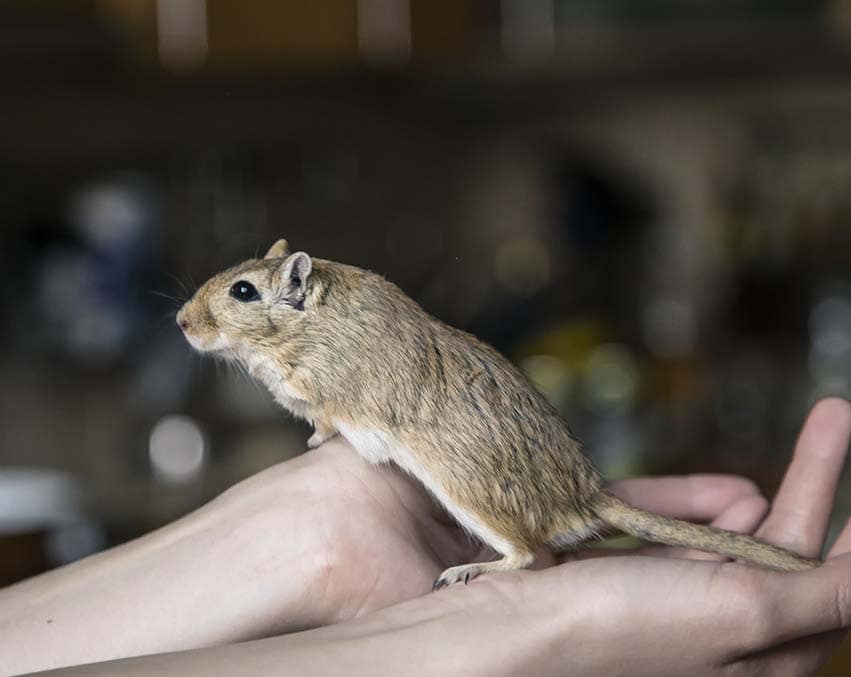

How Do I Know If My Gerbil Is Sick?
When your gerbil shows these adverse health signs, be sure to contact your vet right away:
- Difficulty breathing
- Sneezing
- Discharge from the eyes, nose, or mouth
- Sunken, swollen, or cloudy eyes
- Weight loss
- Overgrown front teeth
- Lethargy
- Diarrhea
- Signs of fleas or lice
Here are a few other illnesses that are common among gerbils and what they look like.
Tyzzer’s Disease
Tyzzer’s disease is a bacterial infection in the gut. The signs are diarrhea, tiredness, pain, a posture that doesn’t look normal, untidy coat, and dehydration. This condition can be fatal if vet care is not immediately sought out.
Tail Loss
A gerbil’s tail is quite vulnerable to injury if not handled properly. Commonly, the tuft around the tail and skin can be pulled completely off, just leaving the bone (a condition called “tail slip”), veterinary care is required. The exposed tail tip may need surgical removal to prevent infection. Although gerbils can adapt well after tail amputation, this injury should never be ignored, and prompt veterinary attention is essential.
Don’t be too alarmed, once this process is finished, the gerbil hardly notices the loss. If, however, the entire tail comes off in a traumatic accident, you should get your gerbil examined by a vet to make sure no other damage has been done.
Fits
Sometimes gerbils go into fits, most likely due to stressful situations. This can happen when the gerbil has been handled too much, the surroundings have changed, when it senses nearby “predators” (like dogs or cats), and too much activity and noise around the habitat.
A gerbil fit looks like this: ears folded back, twitching, and sometimes drooling. When you see these signs, remove any stressors right away. Your gerbil should calm back down and return to normal.
Fits are more common in younger gerbils who are not yet acclimated to their surroundings.

Gerbil Facts
An average Mongolian gerbil grows to be about 4 inches long, with a 4-inch-long tail. They come in many colors, the most common one being golden agouti, but also white, blue, lilac, and gray, with different patterns as well. Gerbils live for up to 5 years.
The gerbil originates from and lives wild in China, Mongolia, and Russia. They were first mentioned in history in 1866 when Father Armand David, a missionary priest and zoologist, sent the gerbils he found in Northern China back to a French museum to be named and documented. They did not become popular as pets until 1954 when a cluster of gerbils was brought to the United States for scientific reasons. Mostly all pet gerbils today descend from this group.
Gerbils differ from other rodents in many ways. Gerbils have longer tails than hamsters and typically stand upright more frequently due to their long hind limbs. Mongolian gerbils are social, unlike hamsters and fat-tailed gerbils, which are usually solitary.
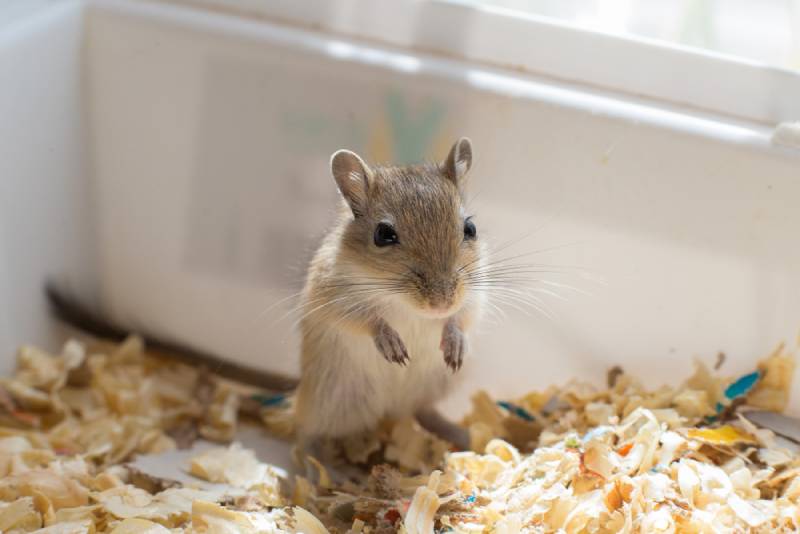
Do Gerbils Make Good Pets?
These tiny creatures make good pets for people looking for a low-maintenance, small mammal. They are less demanding than guinea pigs and, when socialized early, tend to be gentle and rarely bite. However, while they are fairly independent, it’s best not to leave them alone for more than a day without someone checking on food, water, and safety.
Gerbils are sometimes active during the day, and they are active at night, too. They make the best pets for adults and older children; younger children who have not learned the best handling practices might accidentally harm a pet gerbil.
- See Also: Do Gerbils Bite? All You Need To Know!
Where Can I Get a Gerbil?
Gerbils can be purchased at big pet stores like Petco or PetSmart, but availability depends on your location because in some places, like California, they are illegal to own. You can also try looking in your local pet adoption agency or animal shelter, as small rodents can sometimes be available here. Avoid unregulated platforms like Craigslist or Facebook Marketplace, as they often lack proper care standards or health guarantees.
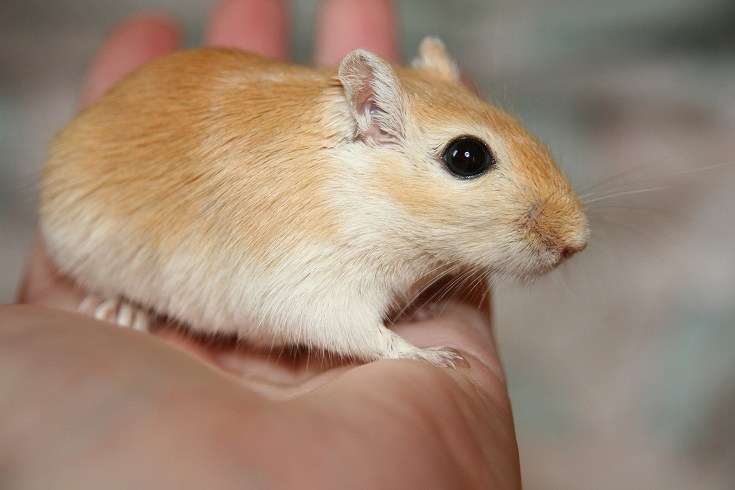
How Much Does It Cost to Own a Gerbil?
One gerbil costs around $5 to $10, but because Mongolian gerbils are social animals, if you are interested in this species, it’s best to adopt a pair. That is not the expensive part. You will spend around an additional $100 on a cage and on outfitting the cage with toys. For food, each gerbil will eat about $15 or so of food and treats per month, and your gerbil tank will need about $10- $15 of bedding every month. For veterinary visits per year, you will probably spend between $35 and $60 dollars per gerbil.
That means your initial cost of buying everything you need for a pair of gerbils can cost anywhere from $90 on the low end to $200 on the high end. The monthly costs of owning a pair of gerbils will be about $40-$50, excluding veterinary care.
- See also: How Much Does It Cost to Own a Gerbil?
What Kind of Home Does My Gerbil Need?
Gerbils need a habitat that’s at least 20 gallons in size for a pair (roughly 24 inches wide, 12 inches deep, and 16 inches tall or larger). This cage can be either a wire enclosure with a deep plastic base or an aquarium tank. If you opt for an aquarium tank, make sure it’s at least 20 gallons and has a wire mesh top that’s secure. Line the bottom of the tank or cage with at least 6 inches of bedding that’s safe for gerbils to dig and burrow in. Do not use pine or cedar shavings, as these off-gas materials that are toxic to gerbils.
In addition to a cage, you will also need to provide your gerbil with a ceramic food dish and a water bottle. Provide your gerbil something to chew on as well; they need something somewhat hard and abrasive to chew on to keep their teeth filed down. Use untreated wood items sold for small animals, such as wooden blocks, applewood sticks, or cardboard tubes. Avoid giving sticks from outside unless they are from safe tree species and have been properly cleaned and heat-treated.
To enrich the life of your gerbil, make sure there are multiple levels in the cage for your gerbil to explore. An exercise wheel is ideal too, as well as a little hiding box or igloo for your gerbil to sleep in or escape into when he desires. Gerbils also love to play in cardboard tubes or PVC pipes, so if you have any extras, you can put them in your gerbil habitat. Your gerbil will appreciate it!
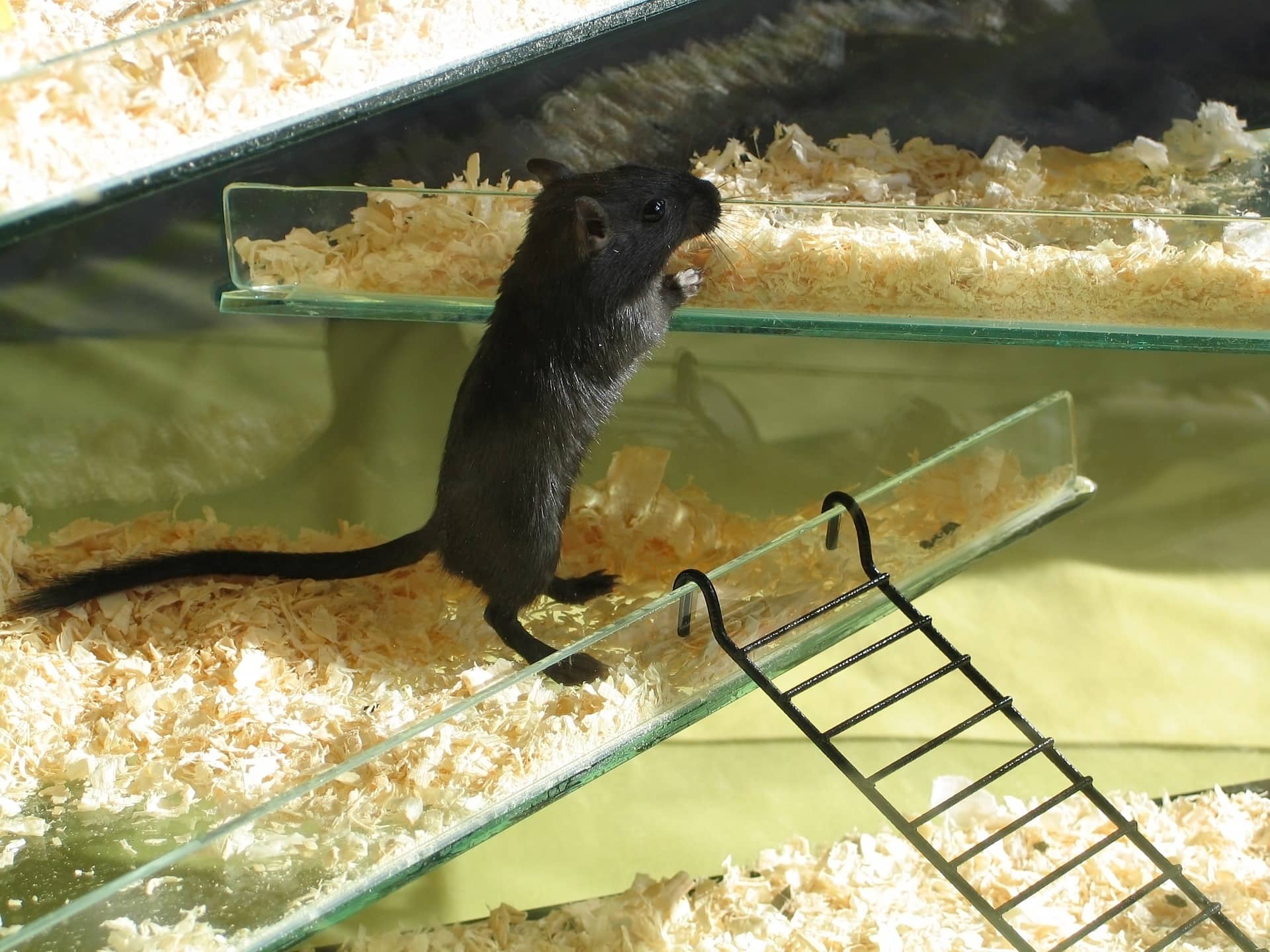
What Should I Feed My Gerbil?
Adult Gerbils usually do fine with a complete gerbil diet in the form of pellets or blocks. It should contain around 14-16% protein content and around 7% fat content. Young, growing, or breeding Gerbills will need a more nutrient dense formula.
In addition to store-bought food, you can give your gerbil small amounts of fresh veggies and occasional fruits as a treat. Safe options that your gerbil will love include carrot, romaine lettuce, peas, and broccoli. Fruits like banana, mango, or kiwi can be offered very sparingly due to their sugar content. Introduce new foods one at a time, and wait a few days before trying another, to monitor for any adverse reactions.
Do not feed your gerbil cabbage, uncooked beans, chocolate, onions, candy, or junk food.
You should provide your gerbil with fresh water all the time, and change the water daily if you can. The best way to give your gerbil water is to attach an inverted bottle to the cage, where your gerbil can drink freely by licking the metal ball at the end, allowing water to come out.

Final Thoughts
Keeping all this in mind, remember that gerbils are extremely tiny creatures that need to be handled with care. Unfortunately, accidents can happen very easily with a rodent this small. Be gentle and you and your gerbil will have many good times together. Also, don’t forget to wash your hands after handling a gerbil as they can carry diseases that could make you sick.
You may also be interested in:
Featured Image Credit: Sildf, Shutterstock


